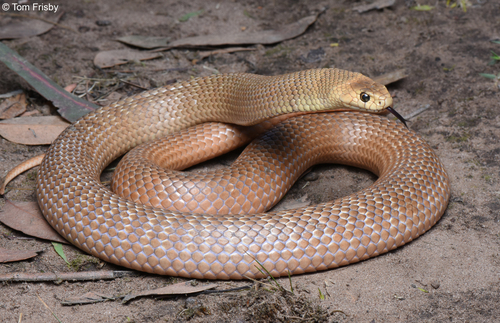
Eastern Brown Snake
The Eastern Brown Snake, notorious for its agility and potent venom, thrives in Australia's grasslands and woodlands. This slender, brown serpent plays a vital role in controlling rodent populations. Despite its fearsome reputation, it prefers to avoid confrontation, highlighting its unique niche in the ecosystem.
15 years
Lifespan
Length: 50 - 198 cm
Size
Brown
Color
Least Concern
Conservation Status
Stable
Population Trend
Characteristics
The Eastern Brown Snake (Pseudonaja textilis) is native to eastern and central Australia. It is known for its slender body and striking brown coloration. This snake is highly agile and possesses potent venom. It primarily inhabits grasslands and woodlands, often found near human dwellings. It preys on small mammals and reptiles.
Distribution Range of the Eastern Brown Snake
Pseudonaja textilis, commonly known as the Eastern Brown Snake, is native to Australia and Papua New Guinea. In Australia, its range extends across the eastern half of the country, including Queensland, New South Wales, Victoria, South Australia, and parts of the Northern Territory. In Papua New Guinea, it is found in the southern lowlands.
Eastern Brown Snake's Habitat
Environmental Conditions
The Eastern Brown Snake inhabits a variety of environments including grasslands, woodlands, savannas, and rural and urban areas. It is highly adaptable and can be found in both warm temperate and tropical climates. The species is often associated with open landscapes but can also be found in areas with a moderate level of vegetation.
Ecological Niche
Pseudonaja textilis occupies a niche as a terrestrial predator, primarily preying on small mammals, birds, and reptiles. It plays a significant role in controlling the populations of these organisms. The species is known for its high level of activity during the day, particularly during the warmer months, and its ability to thrive in varied conditions, including modified habitats such as agricultural lands and suburban environments.
Copyright @ Nature Style Limited. All Rights Reserved.
 English
English